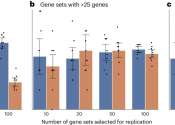Study defines the process of and defenses against cardiac valve calcification
The human body has sophisticated defenses against the deposition of calcium minerals that stiffen heart tissues, researchers at the University of Illinois Urbana-Champaign and collaborators at UCLA Health and the University ...
Jun 27, 2024
0
13









